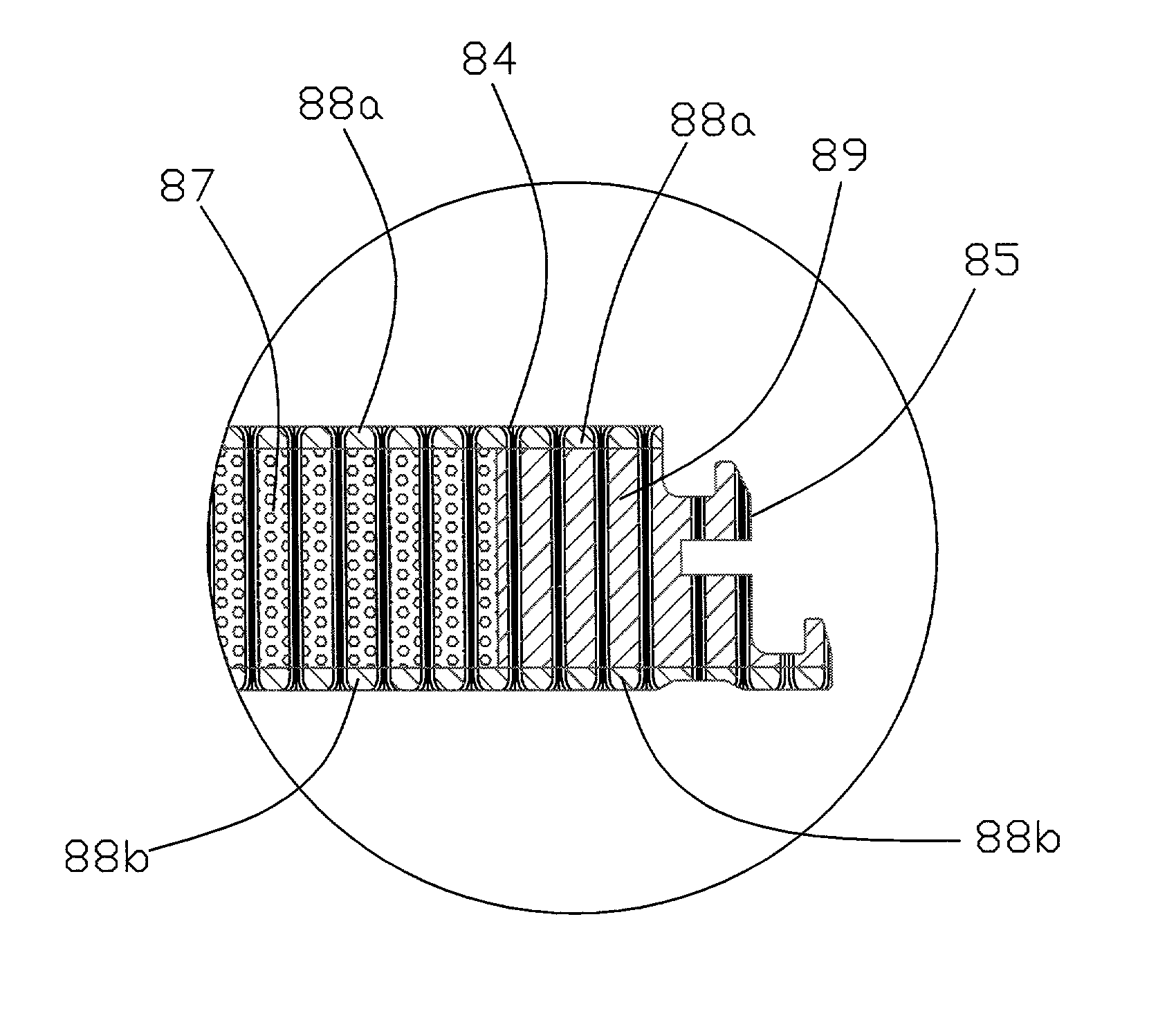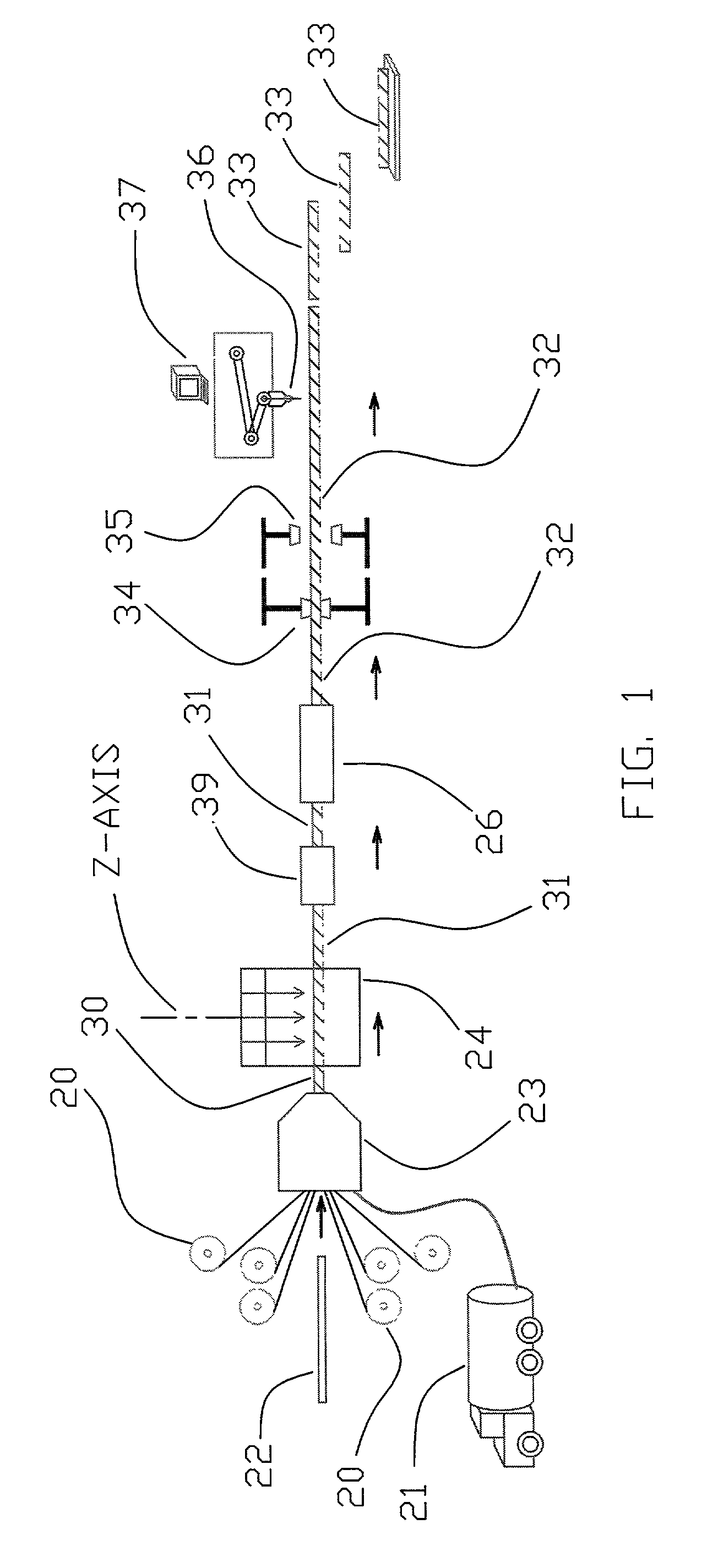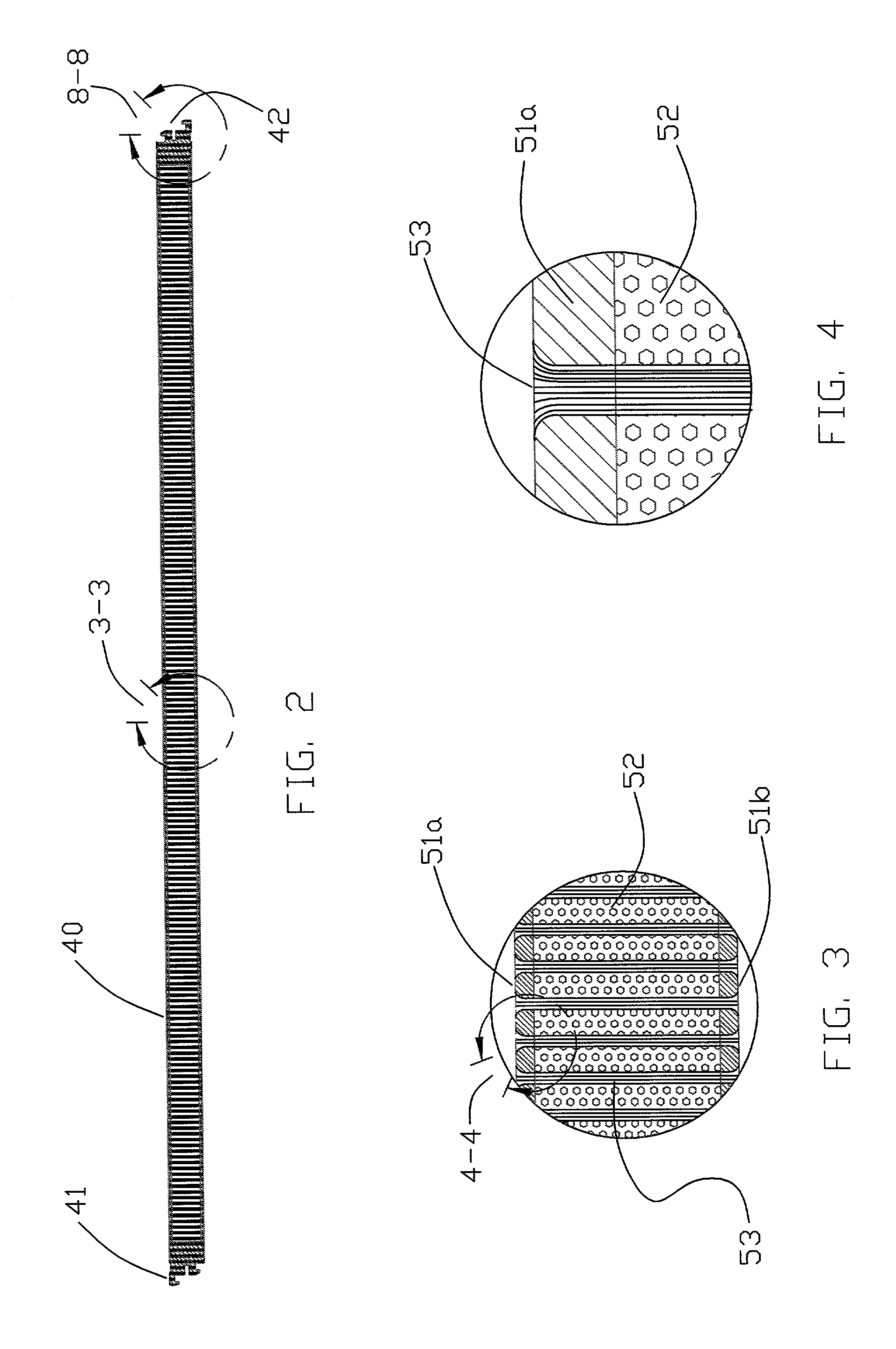Method of clinching the top and bottom ends of Z-axis fibers into the respective top and bottom surfaces of a composite laminate
a technology of z-axis fibers and composite laminates, which is applied in the direction of manufacturing tools, transportation and packaging, and transportation, etc., can solve the problems of core failure under compressive force, failure of bond or adhesive capability, and failure of laminate structure, so as to achieve convenient deployment and assembly and easy handling
- Summary
- Abstract
- Description
- Claims
- Application Information
AI Technical Summary
Benefits of technology
Problems solved by technology
Method used
Image
Examples
Embodiment Construction
[0029] FIG. 1 illustrates a method and application for forming a pultruded and clinched 3-D Z-axis fiber reinforced composite laminate structure. The pultrusion direction is from left-to-right in FIG. 1 as shown by the arrows. The key components of the apparatus will become evident through the following description.
[0030] Shown in FIG. 1 are the grippers 34 and 35. These are typically hydraulically actuated devices that can grip a completely cured composite laminate panel 32 as it exits pultrusion die 26. These grippers operate in a hand-over-hand method. When gripper 34 is clamped to the panel 32, it moves a programmed speed in the direction of the pultrusion, pulling the cured panel 32 from the die 26. Gripper 35 waits until the gripper 34 has completed its full stroke and then takes over.
[0031] Upstream of these grippers, the raw materials are pulled into the die in the following manner. It should be recognized that all of the raw material is virgin material as it arrives from va...
PUM
| Property | Measurement | Unit |
|---|---|---|
| density | aaaaa | aaaaa |
| density | aaaaa | aaaaa |
| compressive strength | aaaaa | aaaaa |
Abstract
Description
Claims
Application Information
 Login to View More
Login to View More - R&D
- Intellectual Property
- Life Sciences
- Materials
- Tech Scout
- Unparalleled Data Quality
- Higher Quality Content
- 60% Fewer Hallucinations
Browse by: Latest US Patents, China's latest patents, Technical Efficacy Thesaurus, Application Domain, Technology Topic, Popular Technical Reports.
© 2025 PatSnap. All rights reserved.Legal|Privacy policy|Modern Slavery Act Transparency Statement|Sitemap|About US| Contact US: help@patsnap.com



